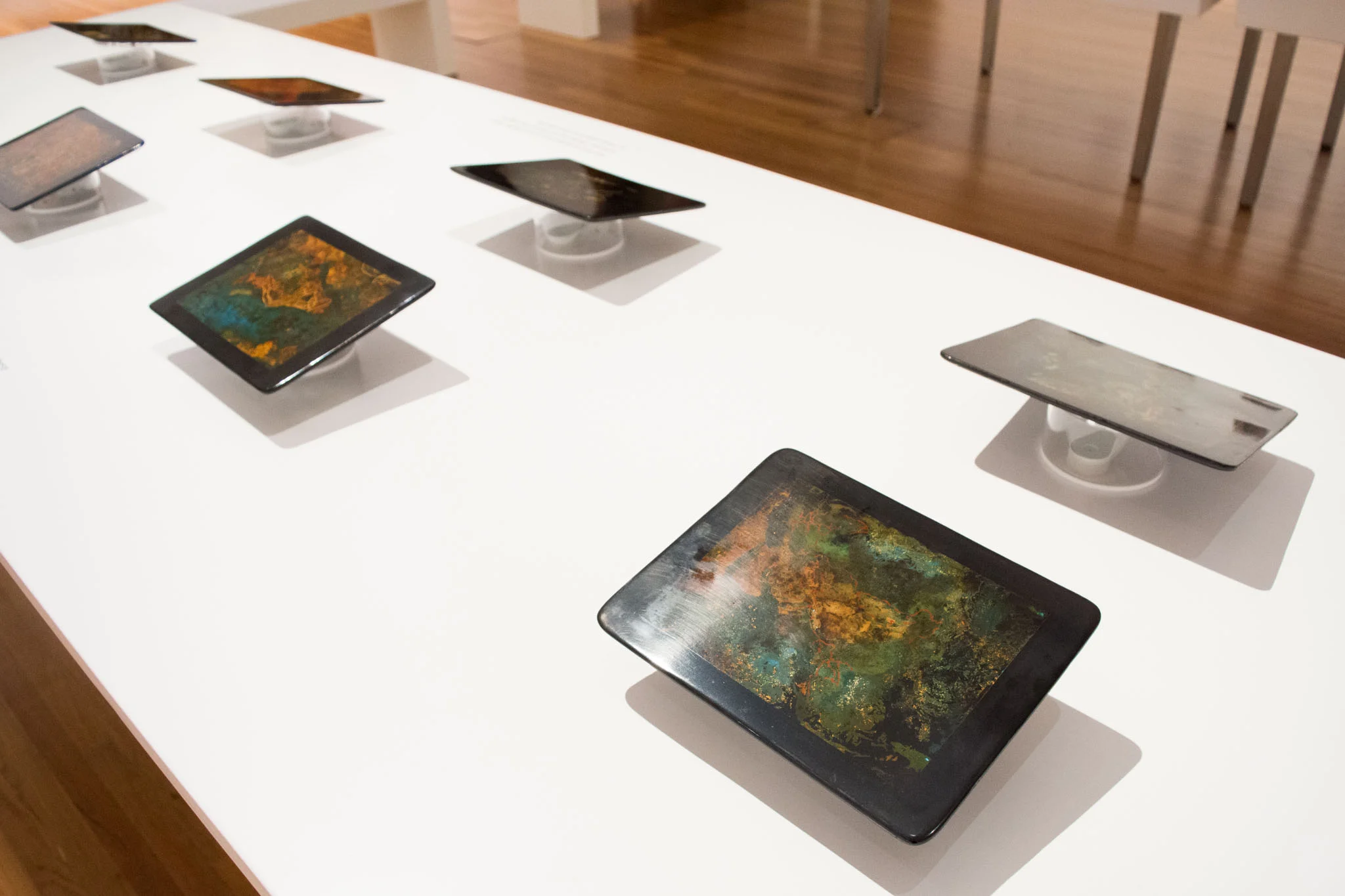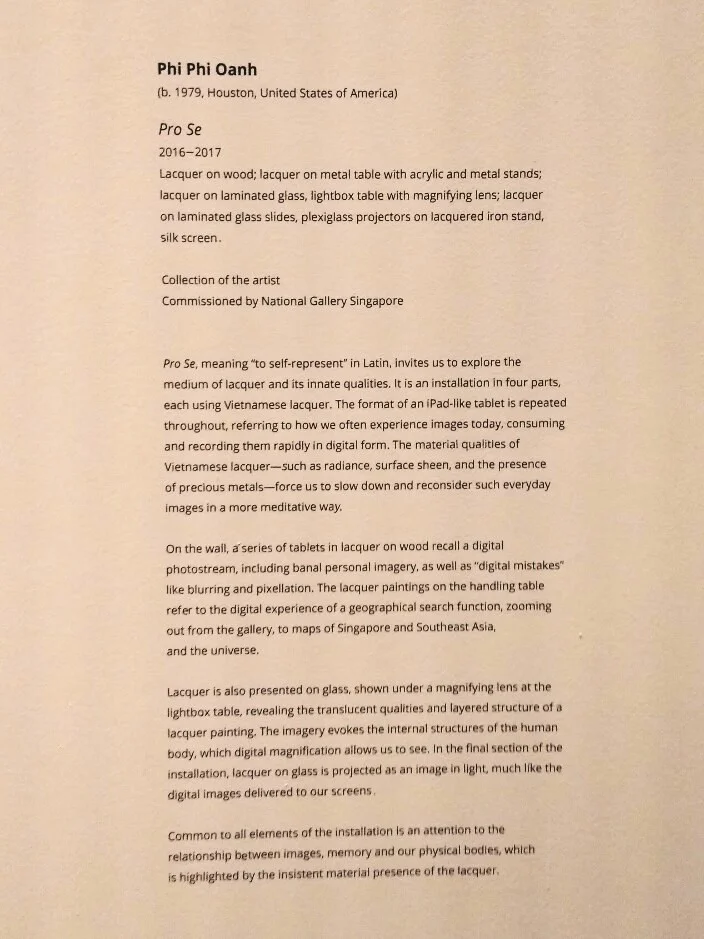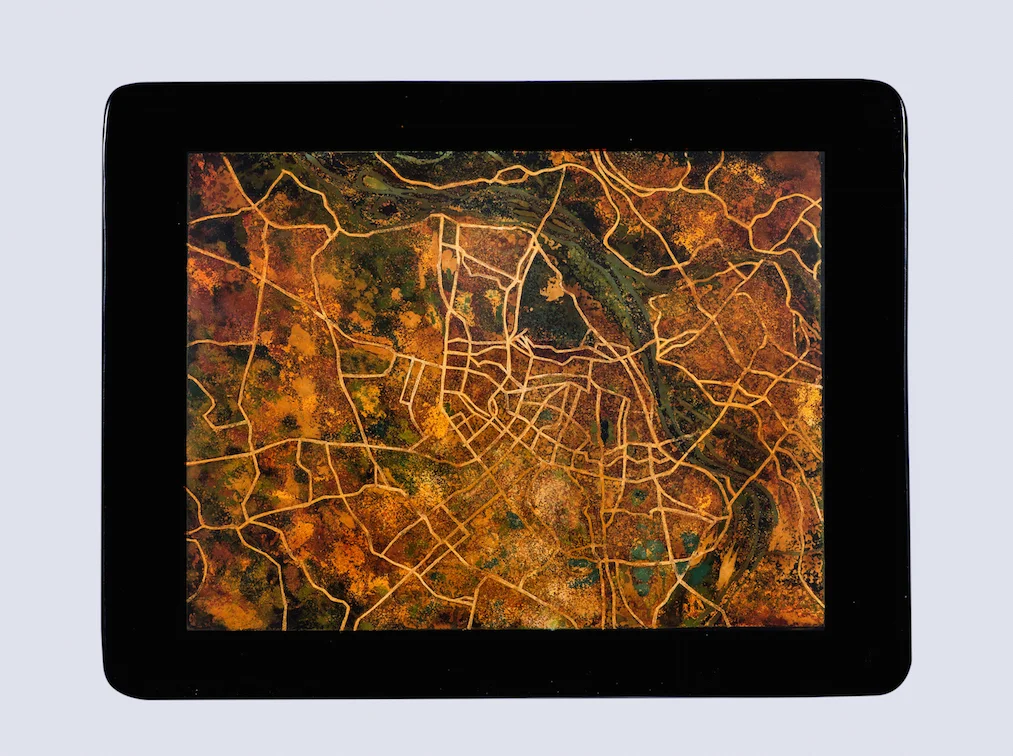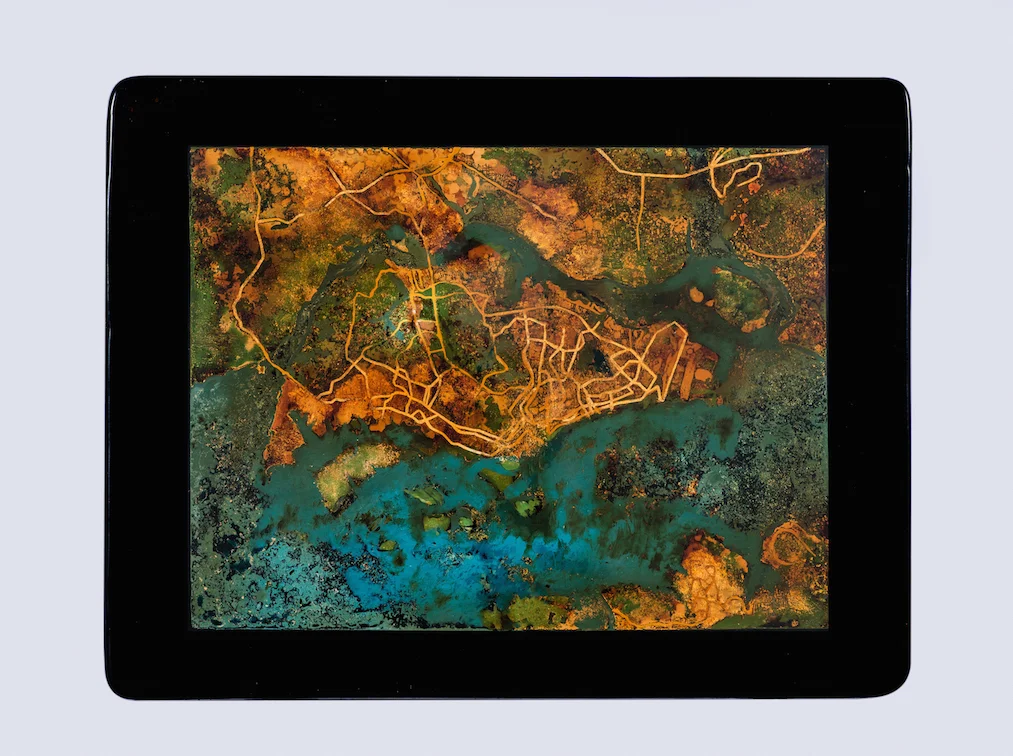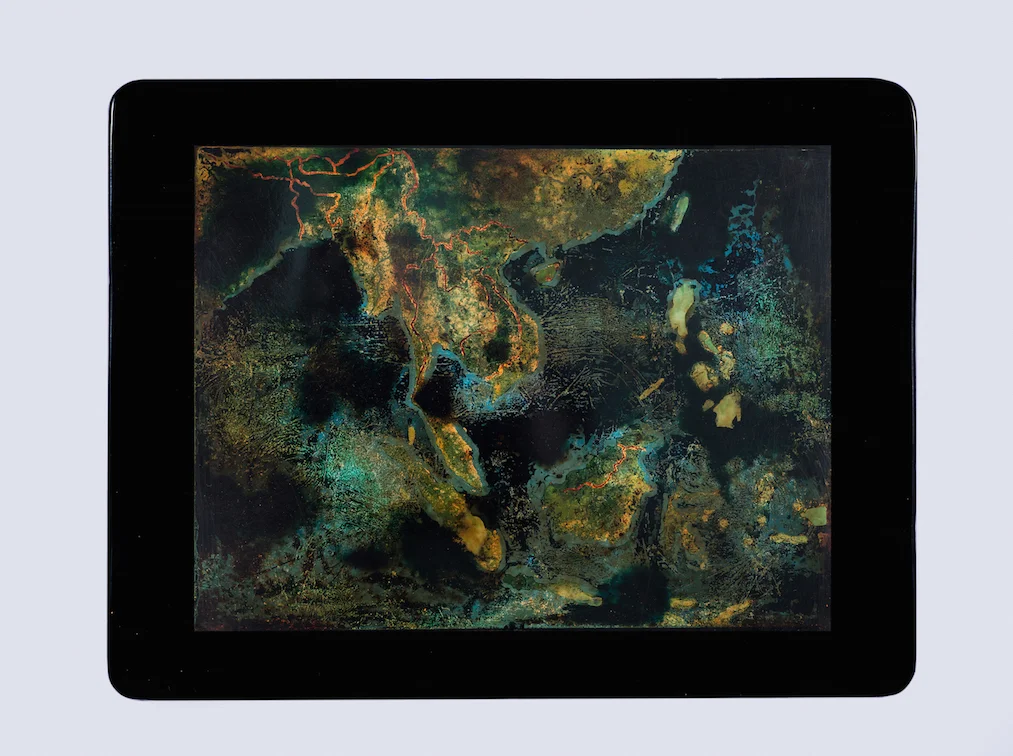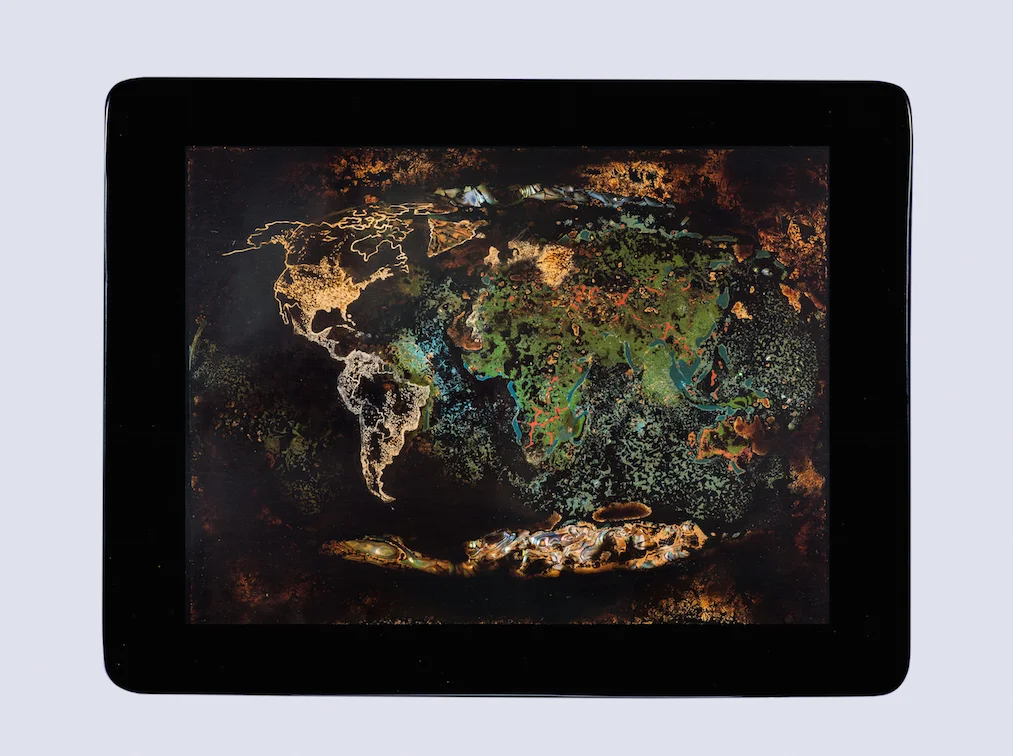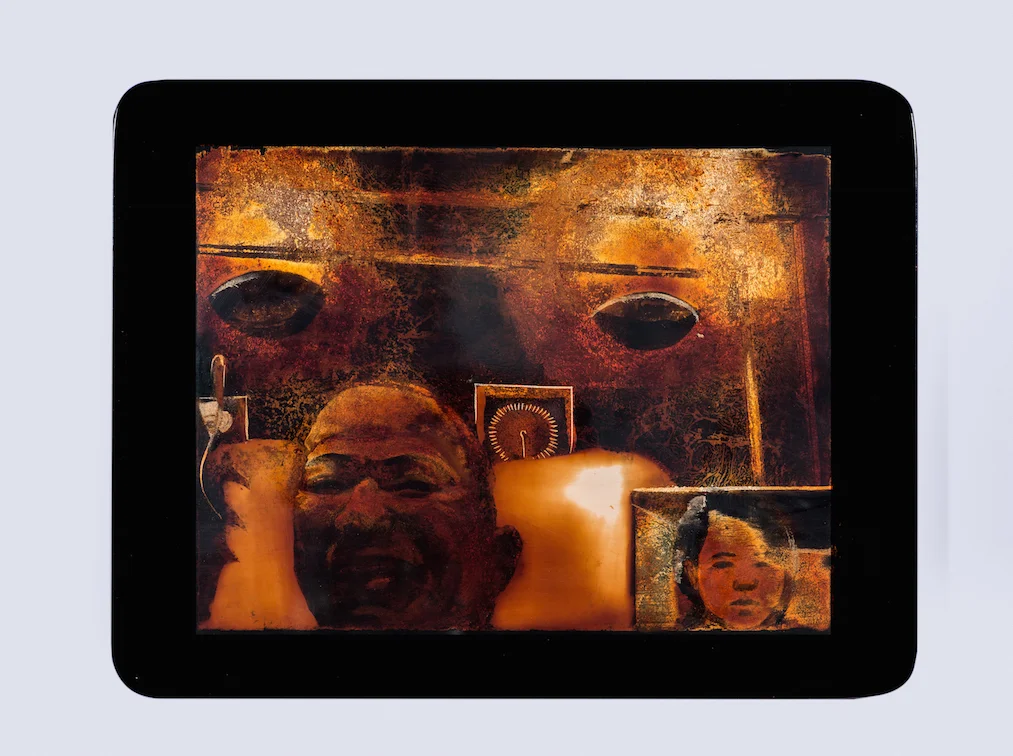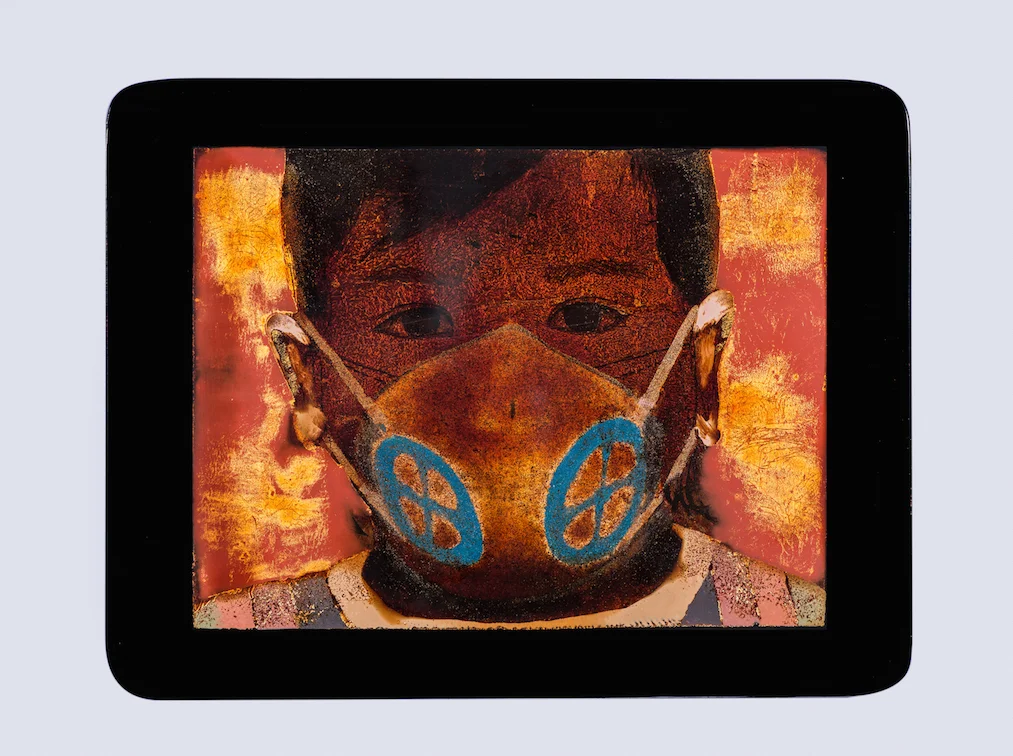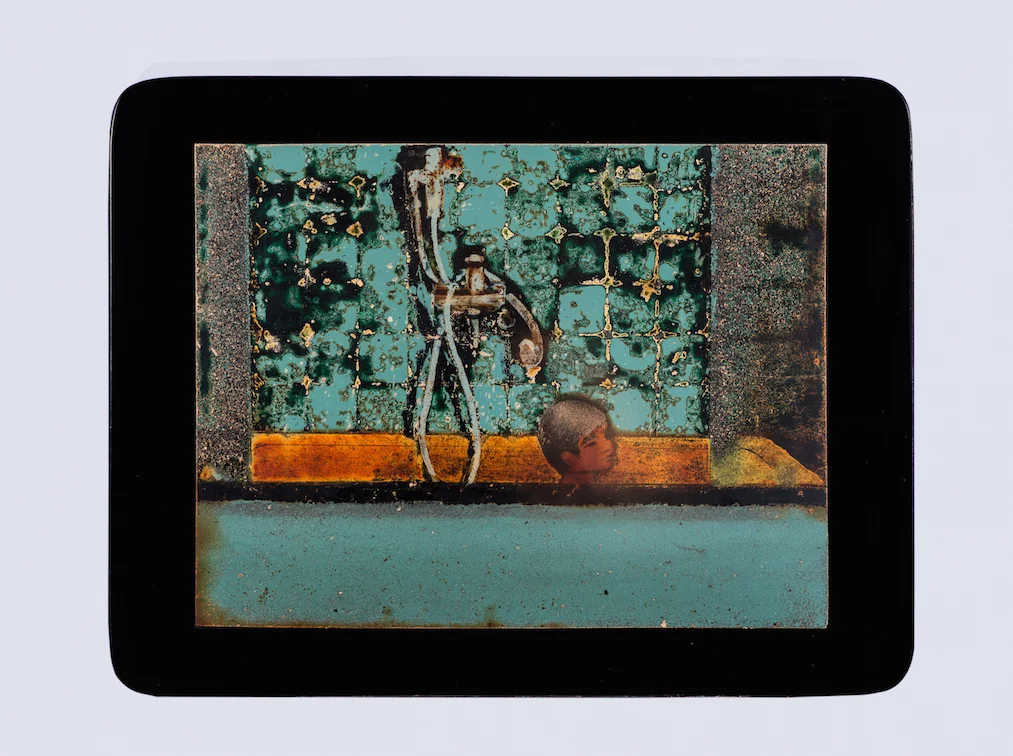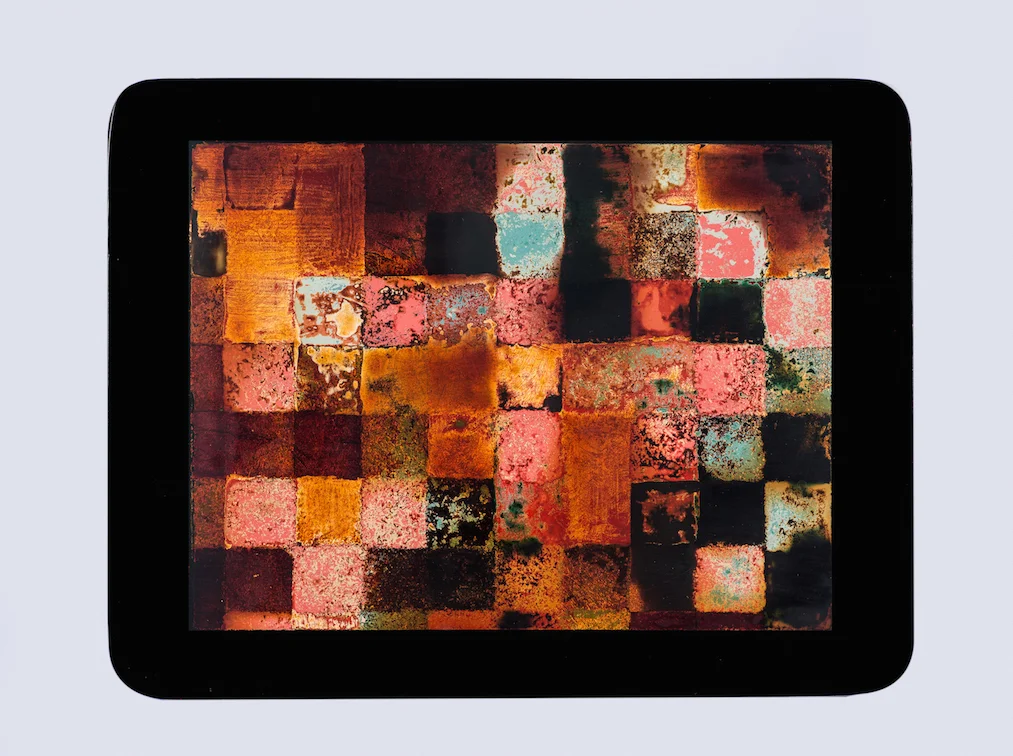Pro Se installation
Work commissioned for by the National Gallery Singapore for the exhibition “Radiant Material”
Images courtesy of the National Gallery Singapore
Individual images of some paintings:
Photo credit: Matthew Dakin
Pro Se, Installation photos courtesy of National Gallery Singapore, Radiant Material, June - September 2017.
Pro Se, Artist Statement
Entering into the exhibition, the viewer seems to step into a tech shop displaying a collection of digital tablets. Upon closer inspection, they are actually lacquer paintings mimicking digital screens. In this pictorial installation, paintings reference the touchscreen tablet, a technological device so ubiquitous that it has become integral to the way we interact and mediate the world and represent a window into our collective imagination. Playing off qualities inherent to both lacquer painting and a backlit digital device such as flat depth, saturated colors, a hyper real surface effect, I try to reflect on the strangeness and the significance of the material and the local in the age of the immaterial, virtual and digital reproduction. Although the painting image is static, I rely on the materiality of the lacquer medium and ever shifting light against the gold and silver leaf to suggest movement and to entice the viewer to move in closer, entering into its “aura”.
All of the lacquer boards and the images in this exhibition are unified under one format (24 x 18.5cm), but this is an exhibition in four parts. Each section explores a different facet in our relationship with being in this time.
The wall paintings:
Perfectly aligned and hung angled at eye level, these small paintings form a dotted line cutting through the exhibition hall. The imagery in this section focuses on how we present and represent our self through our own images in the present. This series is inspired by photo streams found on everyone’s digital device and include mis-taken selfies, vacation photos in front of iconic locations, pictures of food, or generally images that we collect because somehow they impact our lives. In terms of exploring lacquer as painting, each panel tests a way of depicting naturalism in which lacquer brings to the image a sense of drama, emotional intensity and concrete physicality.
This series starts with Tet lunar new year and ends on the 30 April and records like a personal diary different facets of life bounded to this timeframe.
The interactive tables:
The first interactive display table placed in the middle of the room invite viewer to physically pick up the “tablets” to explore the object’s weight and touch the cool temperature of the lacquered surface. These are lacquer paintings on metal, and the density of the iron remark on the weightiness of the physical material objects. The imagery in this section is inspired by geolocation and satellite imagery. The first image starts from the exhibition hall and zooms out from city to region to continent to world to universe. Together they are about being in a specific geographical place and time.
The second display in the center are several cabinets housing lacquer skin paintings, that is, lacquer painting on glass and then laminated. I still employ the traditional lacquer painting technique of layering and sanding but the traditional wood surface has been dematerialized and replaced here by transparent glass that encases it. A sliding magnifying lens frame rolls over to allow the viewer to peer into the painting augmenting the illusion depth in lacquer painting while simultaneously giving away its means of construction. The skins are back lit and front lit to optimize the pure qualities of the lacquer painting that one would not be able to see on another surface.
The imagery in this display cabinet include different types of hardware of perception and processing and of the types of things we could not visualize without the aid of technology. The glass pieces broadly try to approach the unknown part of being, and the unfathomable translation of physical hardware into activity and consciousness and our relationship with seeing and believing.
Lacquerscope projections:
This final part of the exhibition presents lacquer as a device and a virtual image through the projection of lacquer slides through machines I call Lacquersopes. The iPad pieces on wood and glass explore the metaphor for interface but part three actually manipulates light, lacquer, electricity and optical technology to generate an image emphasizing how we use machines to visualize and the phantasmagorical and/or virtual location of the image.
This project also aims to reflect in lacquer painting a progression within our society towards the blending of assumed oppositions in categories such as digital and material, human and technological, social and private. Starting from the original reference of painting as window onto the world, this exhibition continues referencing the screen as a metaphor for painting but also painting as a metaphor for the screen. The significance of the medium of lacquer here has to do with its use as a marker for dialectical changes in Vietnamese society. Evolving from a simple varnish to preserve cultural and religious relics to a painting medium for personal and nationalistic expression, it now is charged with the ability to also reflect and visualize the conditions of thought and sight in which we live.
As a commissioned work by the National Gallery Singapore to respond to Nguyen Gia Tri’s 1936 seminal work Les Fees, this exhibition belongs to a young but vibrant tradition that began in the 1920’s when the founding artists of Vietnamese lacquer painting began to theorize and create works about the potential of lacquer painting within their modern framework. Nguyen Gia Tri’s, Les Fees, essentially captures this spirit in its scale, imagery and experimental nature. This project continues in its shadow by taking on the experimental approach to lacquer painting and searching for its potential in the contemporary period.



